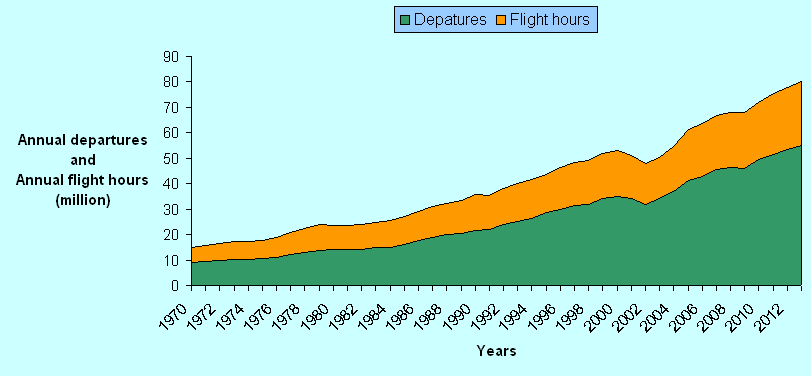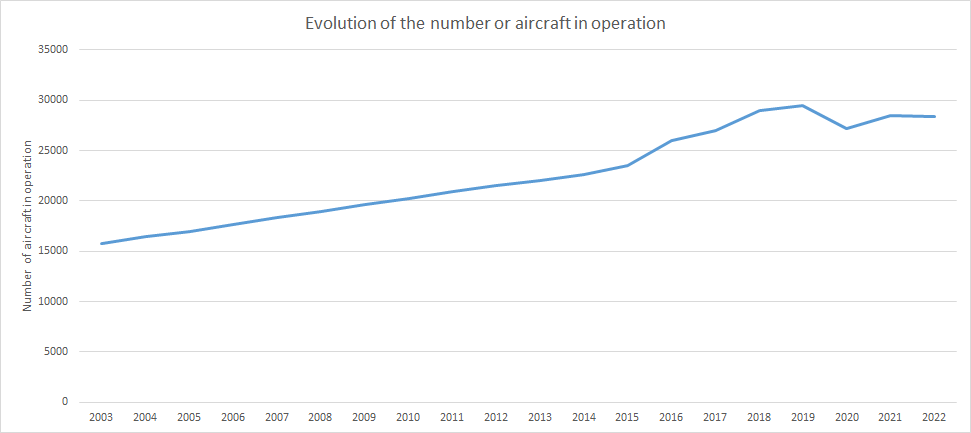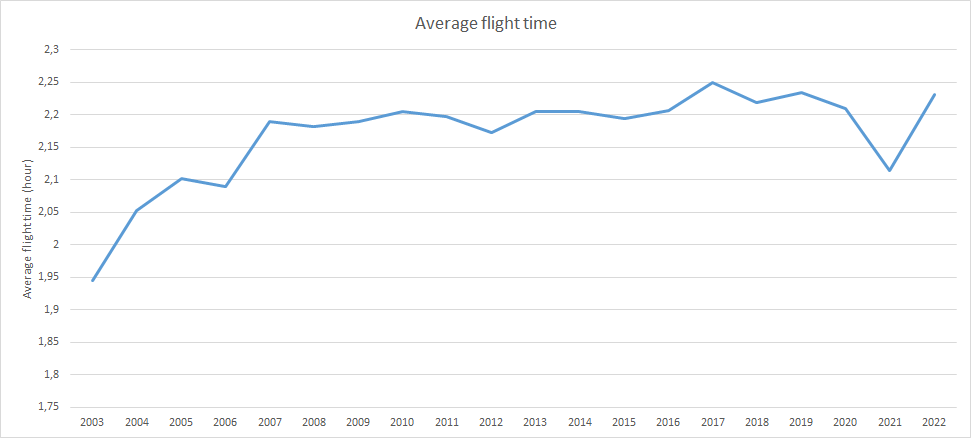Commercial aviation accidents statistics
Aircraft accident statistics can prove a valuable source of information that allows for the setting of priorities and the monitoring of progress made by the aeronautic industry. They are being calculated for many kinds of aircraft. The statistics presented in this section include worldwide commercial jet planes with a maximum gross weight of over 60,000 pounds . Airplanes manufactured in the former Soviet Union (CIS) are not included.
1. Growth in air traffic
Since 2000, global air traffic saw substantial growth, doubling the number of annual passengers from 1.7 billion to over 4.5 billion by 2019. This surge was driven by economic globalization, increased tourism, and the expansion of low-cost carriers. However, the COVID-19 pandemic caused an unprecedented drop in air traffic in 2020, with global passenger numbers plummeting by around 60% due to widespread travel restrictions and lockdowns.
Recovery began in 2021 as vaccination campaigns progressed and restrictions eased, with domestic travel rebounding faster than international. By 2022, airlines were restoring routes and increasing flight frequencies, although challenges like fluctuating restrictions and rising fuel costs persisted. By 2023, passenger numbers in many regions neared pre-pandemic levels, buoyed by a resurgence in business and leisure travel, and the reopening of major markets.

In 2022, commercial aircraft accumulated approximately 58.7 million flight hours. In light of these figures, it is easy to understand the emphasis aircraft manufacturers place on the probability of malfunction or accident. Indeed, if for each flight hour, an event has a one in a million chance of occurring, it will statistically happen several times a year. This mathematical reality underscores the imperative for rigor in reliability calculations and forecasts within the aviation industry, in order to ensure the safety of global air operations.
The following graph shows the total number of certified commercial jet airplanes with a maximum gross weight of over 60,000 pounds. It does not include airplanes manufactured in the former Soviet Union.

The number of aircraft continues to grow to meet the ever-increasing demand for air transport, thus making the airspace increasingly congested. However, there is currently no imminent danger of collision, as new technologies allow for increasingly precise measurement of aircraft position and altitude. These technological advancements benefit both flight crews and air traffic controllers, ensuring optimal and safe management of air traffic. For example, in order to accommodate all traffic over some oceans, specific airspaces where aircraft are separated vertically by only 1000 ft were created. These are called 'RVSM' (Reduced Vertical Separation Minima) airspaces.

The graph above shows that the average flight time also increases with time. Some state-of-the-art aircraft can perform 22-hour non-stop flights and fly halfway round the world without landing. These very long-haul aircraft are becoming ever more common.

